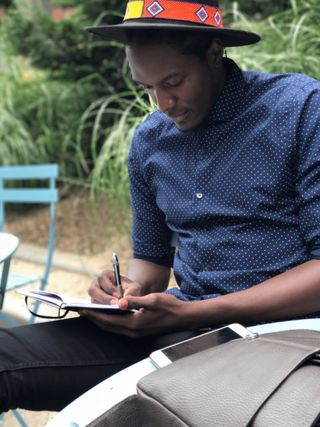Career
How Do You Know If Your Writing Is Good?
A guide to what you need to know to evaluate your work
Posted September 23, 2019
Once, my colleagues and I wrote a paper based on a large study of children and adolescents. The paper represented years of work and hundreds of thousands of dollars in grant money. We sent it to one scientific journal—rejected. OK, that’s a bummer, but it happens. We sent it to a different journal. Rejected. It would go on to get rejected a third time before finally finding a home at our 4th choice. However, once it was there, it caused quite a storm, at least by the standards of my field and my work. Our paper won the Child Maltreatment Article of the Year award from a major national organization, and since then it has gone on to be cited more than 1000 times, which in academia is kind of like getting a top ten hit on the music charts.
When my scientific colleagues are feeling down about a rejection they have received, I tell them this story. It’s not as good as JK Rowling’s or Steven King’s stories of rejection, but it cheers my colleagues and sometimes inspires them to resubmit their paper to another outlet. Which they should definitely do.
Everyone struggles with the question of “How do I know if it’s good?”
There’s no perfect answer, but there is guidance. If your question is whether you are the next Toni Morrison, “no” is a good guess. However, if you want to know whether rejection means that your work is no good, or if it is just not a good fit for that editor, or that editor is a fool who can’t recognize good work, there are reliable inklings. Whether you want to publish in psychology or another field, you can learn to evaluate your own work.
Knowledge of the Industry
To know if your writing is good, the single most important question you can ask is, “Do I know the current standards of the field I want to publish in?” If you can’t give a strong yes to this question, it’s a big red flag.

I’ve been on both the author and editor side of publishing, and here’s what I’ve learned—often the hard way—about getting your manuscript into publishable form. “Publishable” is my definition of good. You don’t have to be a genius to be a successful author.
Know the Difference Between a Good Student Paper and a Publishable Paper
As editor of the American Psychological Association journal, Psychology of Violence (2010-2018), I reviewed and decided whether to publish more than 1500 manuscripts. In that time, I encountered a range of expertise. I occasionally saw papers that were almost certainly written by undergraduate college students. I’m sure that these students have tremendous potential and probably many of them did go on to become published authors. However, often these early efforts reflected a lack of understanding of the difference between student and professional writing. A common college assignment is to write a 10-page paper, perhaps with 5 or 10 scientific references. Sometimes these papers are quite good, especially for someone at that level of professional development.
Still, few of those papers would be publishable in a scientific journal, where the bar is much higher. The very act of submitting such papers to a scientific journal shows that the writer has not yet learned the basic standards in the field. Most psychology articles start as 25-to-30-page manuscripts with 30 to 50 references. Some are longer. When I was in college, I knew—and didn’t much appreciate—that it could take a very long time to read a 10-page scientific article. I did not realize that is partly because a 25-page manuscript (double-spaced, 12-point font) will be about 10 pages when formatted for publication.
When I was in college, I could have noticed that most papers I was assigned to read had dozens of references, but mostly I thought of those pages as “the part I don’t have to read.” Today, to publish a literature review, research team often screen several thousand papers to identify the 60 or 70 that make it into the final paper. It would be an impressive accomplishment if a team completed a review in a single semester, much less the week or two that most undergraduates spend on a paper. It would not be unusual to spend 2 or 3 years on such a project.
“Good” and “excellent” mean different things in different contexts. In an undergraduate classroom, a paper is an educational exercise meant to introduce newcomers to some of the basic concepts in a field, including how to glean knowledge from scientific articles. In a scientific journal, a paper is supposed to provide new information to the most knowledgeable people on the planet, in their area of expertise.
I always tried to write encouraging letters to the students who submitted to the journal, but they were also always rejection letters. Many of these talented students probably went on to graduate school, where they would learn the additional skills to become a published scientist. However, as editor, my first duty was to ensure that the journal contributed to the advancement of scientific knowledge. Someone who has been working in the field for a few weeks or even a few days, no matter how smart they are, would find it very difficult to even know what a new contribution would look like. That’s not the same as an “amateur”—there are people, like Einstein, who follow fields very closely in their spare time but are paid for other work, and sometimes these people make amazing contributions.
Know How Editors and Agents Work, and What They Want

A few years ago, I got interested in writing fiction. I was looking for a change of pace after more than 20 years of science writing. By that time, I had published more than 100 scientific papers and either authored or co-authored a few books for a scientific (read: small) audience. I didn’t appreciate how hard it would be to switch genres, but I was helped when my friend Molly convinced me to go to a conference for children’s book writers.
There, I learned about the fiction industry. Yes, it is a labor of love for almost everyone in it, but it is also a business. Although I thought I reviewed a lot of papers as editor—reviewing 4 to 6 papers a week—some agents and editors are getting that many submissions every hour. I can’t imagine. They call the uninvited ones the “slush pile.” It is possible to get discovered from the slush pile, but it is not easy, and it requires understanding how they cope with that flood of submissions.
To begin with, the first page is incredibly important. At this conference, they offer a session to help people revise their first pages by reading some anonymously and commenting. It was an eye opening experience. At the end of some opening pages, we could not tell whether the characters were boys, girls, or non-binary individuals, nor could you tell their age. It makes a big difference in children’s literature whether the main character is 8 or 16. On the other hand, cramming too much on the first page is not good either—don’t introduce all 8 characters in the first 250 words. Once, more than half of the pages described scenes of bullying in a middle school cafeteria. Which isn’t bad in itself, but it does mean that if your novel starts in a middle school cafeteria, it’s going to have a much harder time standing out from all the other submissions.
I’m still working on my middle-grade novel, but I have completely re-worked the opening now that I understand more about the slush pile and the work loads of editors and agents.
Take Advantage of Opportunity Knocking

On the other hand, I am a published poet. That was mostly due to a bit of luck. Some years back, we spent a semester in Italy, chaperoning a group of students who stayed at a castle owned by Ezra Pound’s daughter, Mary de Rachewiltz. Although our children were small at the time, I made time to sit in on her class on her father’s poetry, and found myself reading a lot of poetry and talking a lot about poetry and the poetry "industry." Soon enough, I found myself crafting a few stanzas. My home university published a small literary magazine, The Cairn, and I knew the editors gave sympathetic reads to submissions from faculty, and they accepted mine. Later, I showed them to one of the university’s many guest poets, and he told me that they didn’t even qualify as poetry. I still really don’t know what he meant by that, although I suspect that he meant that my efforts, which focused on caring for our two small children, didn’t address sufficiently lofty—or maybe sufficiently masculine—themes. Still, he and I have published in the same poetry journal! So that’s another time I had to learn not to take someone else’s criticism too seriously.
Read, Revise, and Register
The best way to become a member of the writing community is to work at it. Authors know how to persevere. The Three R’s for authors are Read, Revise, and Register.
First, read the literature you aspire to contribute to. Keep up with the scientific research or read other fiction that is in the same genre as yours. You will have to anyway, because one requirement of a book proposal, in the sciences or in fiction, is to be able to describe “comps,” or similar, recent titles that show that there is a current market for books like yours, and that your book will fit into that market while at the same time offering a fresh perspective.
Second, revise. I heard one author say that she typically does 70 or 80 revisions for each book. I’m not sure I do that many, but I spend many weeks, months, or sometimes even years on every manuscript. Be aware that you will have to revise again when you get feedback from editors and/or reviewers. Sometimes these are nicely worded, sometimes not so much, but still I generally find that they help me improve my manuscript. Although I often have to put them away for a few days until I can tolerate the criticism well enough to benefit from it.
Finally, register. Invest in the person you want to become. When it comes to publishing, I learned more from the two days that I spent at my first fiction conference than I had from a lifetime of reading. I tell students that they will learn more from two or three days at a professional psychology conference than they will from a whole semester’s worth of courses. This is especially true when it comes to understanding scientific standards and understanding what it is like to be a professional psychologist. A less expensive alternative is subscribing to podcasts. Two of my favorites for learning about writing are Scriptnotes and Print Run. Still, nothing substitutes for that in-person experience. A few days among a community of scholars or authors will tell you all you need to know about what it takes to join that community. Learning how to evaluate your own writing is a valuable skill, but one that is also within reach.
© 2019 Sherry Hamby. Sherry Hamby, Ph.D., is the Director of the Life Paths Research Center, Research Professor of Psychology at the University of the South, and Founder and Co-chair of ResilienceCon.




